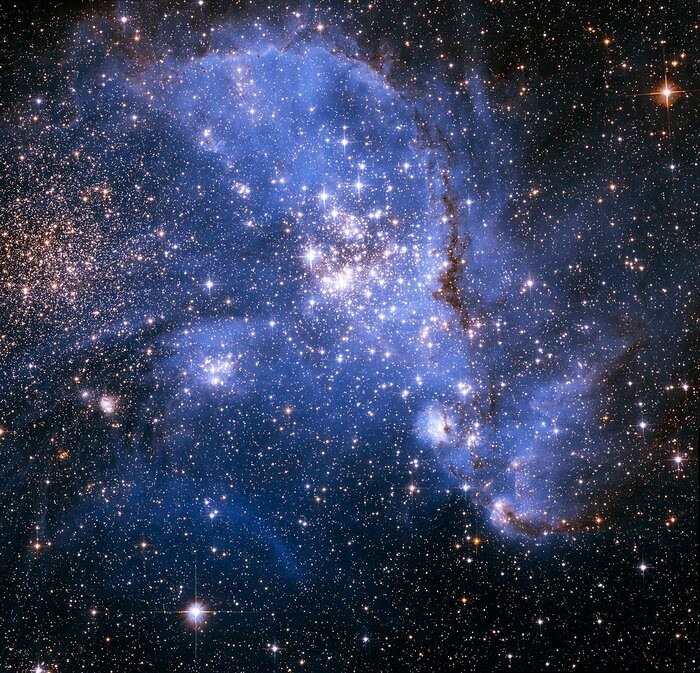
Somewhere in a stellar nursery, newborn stars dazzle amidst the dust of glowing purple hues, making it seem like an enchanting and recurring starry dream.
NASA's Hubble Space Telescope was able to capture this magnificent moment thanks to its powerful space capabilities. In the neighboring Small Magellanic Cloud, the telescope has observed stars and gas spiraling towards the center of a vast, oddly shaped stellar nursery.

A Window to Early Star Formation
As seen in the recently released image taken by the Hubble Space Telescope, astronomers believe that the outer arm of this spiral of stars and gas may be supplying a river-like flow of gas that is fostering star formation in the NGC 346.
The finding may offer a window to how stars formed when the 13.8 billion-year-old galaxy was only a few billion years old and went through a stellar "baby boom" of vigorous star formation.
"Stars are the machines that sculpt the universe. We would not have life without stars, and yet we don't fully understand how they form," Elena Sabbi, study leader and an astronomer at the Space Telescope Science Institute in Baltimore, said in a statement with NASA.
NGC 346 has a diameter of only 150 light-years and is made up of star material with a mass of 50,000 suns. Astronomers have been baffled by the area's rapid star production and have been a constant subject of interest in astronomy.
Since NGC 346 is housed in the Small Magellanic Cloud, about 200,000 light-years from Earth, astronomers can observe the light that is more recent than that from galaxies farther away, which can provide information about the early universe. The dwarf galaxy, however, resembles early galaxies in several aspects.
Read also : NASA's Hubble Space Telescope Captures 'Orion Nebula's Dreamy Cloudscape' With Over 500 Exposures!
Tracking The Stars' Movement
Two methods were used to determine the stars in NGC 346's motion. Sabbi and her team used Hubble to track the stars' movements for 11 years.
With an average speed of 3200 kilometers per hour, the stars in this region cover 320 million kilometers in just 11 years. This is roughly twice as far Earth is from the Sun, according to NASA.
However, this cluster is located inside a nearby galaxy, which is rather far away. As a result, the motion is exceedingly tiny and challenging to measure. Only Hubble's great resolution and high sensitivity made these exceedingly precise observations feasible.
The second team, for the European Space Agency, was directed by Peter Zeidler of AURA/STScI. They employed the Multi Unit Spectroscopic Explorer (MUSE) instrument of the ground-based VLT to detect radial velocity, identifying whether an object is nearing or retracing from the viewer.
This investigation of NGC 346 used archival Hubble data for half of its analysis. It's been 11 years since the initial observations were made. The stars' motion through time was recently tracked by repeating them.
Due to the telescope's lengthy lifespan, the Hubble data archive now has more than 32 years' worth of astronomical data, enabling unheard-of research.
Related Article : NASA's Hubble Space Telescope Captures 'Butterfly Nebula' In Stunning Motion | Fun Facts About This Beautiful Space Butterfly
This article is owned by Tech Times
Written by Joaquin Victor Tacla




